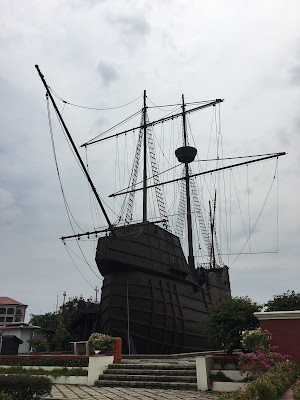The main reason why I went Africa was this Devil's Pool tour in Victoria Falls, Livingstone, Zambia. I saw it on YouTube like 3 or 4 years ago and ever since that I was planning to visit it.
What got it late my visit to Africa was the bribery cases in Africa. I've heard the stories like a policeman randomly check your passport and don’t give it back without you giving him some money. I was not brought up that way by my parents so by all means bribing someone is something I don’t like. I was collecting information about this issue for years like how to get rid of such situations in Africa solely because of visiting Victoria falls. Anyway, there was this point came where I need to visit Africa negating these bribery cases. So I went Africa. I was in 2 African countries within 1 week, I did NOT encounter a single situation such that. I'm glad I made this tour.
Victoria Falls is the world's largest waterfall. Victoria Falls is one of the 7 natural wonders of the world. It is around 2 times wider then the Horseshoe Falls and 3 times higher than the Niagara. This was first discovered by David Livingstone. He was a Scottish citizen and He name the waterfall after The Queen Victoria. Locals in Zambia call it "Mosi-oa-Tunya" which means 'The Smoke That Thunders'. And Victoria falls separates Zambia and Zimbabwe. The waterfall is in Zambia and the other side is Zimbabwe. Zambezi is the name of the river which creates this marvelous natural wonder. Devil's pool is only accessible from Zambian side, so you need Zambian Visa if you're coming from Zimbabwe side. There's special visa call 'Kaza visa' for tourists who visit both Zambia and Zimbabwe. Visa fee is $50 and they add up a service charge too.
Devil's pool tour is operated by the Hotel(Tongabezi Lodge) who owns that part of the river. And I must say it is well organized, properly managed and conducted under careful eyes of guides. So far no casualty has been recorded attempting to dip in the Devil's Pool. This is only possible during low water seasons, mid August to mid January. You can see the available time stots from this site and book the tour using the same site. This is the site allocated for information related with Devil's pool http://www.devilspool.net/. This is Tongabezi main site https://tongabezi.com/. But when I was trying to book via online, the devilspool.net site had some issues. So what I did was, I asked my accommodation people to book a slot for me. When I came to my accommodation they gave me a receipt and I paid the amount at the Tongabezi hotel.
You need to get to the Tongabezi hotel to start the tour. Taxis are available and that's how you can get to the hotel. On the way you can discuss with the driver about the pickup time and ask him to come back and pick you up. Since it's a luxury hotel and if you get a hotel cab it would be too expensive. Devil's pool tour Guides pick you up at the hotel's deck. And then you've 5 minutes boat ride towards the edge of the waterfall. You stop your boat at the Livingstone island and then it's a 5 min walk and 5 min swim to the Devil's pool.
Devil's pool was first discovered by the local fishermen. They were used to catch fish here and later tourists came and took photos and then the word went out. They carry 5 tours per day. I specifically went for the morning tour as I learned on internet during morning sessions there could be a chance that I would see a rainbow. And I wasn't disappointed. The tour is like 1 1/2 hours. After that you can enjoy a lovely breakfast.(Or lunch or evening tea depending on the time you select the tour)
I faced no issues related with Zambia except for their eVisa. I applied using their official website https://evisa.zambiaimmigration.gov.zm. I had a nightmarish time close to a period of month trying to get the Visa. I wrote to their immigration, I wrote to their other embassies, I called their consulate here in Sri Lanka dozens of times, I applied again for visa through an agent but nothing worked. 2 days prior to my departure, I still did not get visa, I was at my flight booking agents to change the flight tickets. I was like just about to confirm the new flights, I just checked my phone email inbox and saw a new email notification. That was Zambian visa. Fairy tale end. Getting Zambian Visa was mentally torturous but still worth it comparing the experience.
Zambian immigration responded me on my last day in Africa. I was in Kenya at that moment. They were very slow to respond. What worked for me was, Like 6 days prior to my departure, I was desperate, I humbly asked my Zambian accommodation people whether they can give a call to Zambian immigration and check the status of my application. They went a further step ahead, they contacted someone at their tourism board and he/she contacted Zambian immigration. He/She was the influence who got me visa as I believe. Pure luck! My accommodation was Fawlty Towers Backpackers and unless for them I would not have made it. It was a good joint in the town to spend some quality relaxed time. From Fawlty Towers Backpackers to Tongabazi hotel taxi fee is 60 Kawacha(Like 5 or 6 dollars). But make sure you negotiate with your driver before you get in the car. And cars are available right in front of Fawlty Towers Backpackers.






